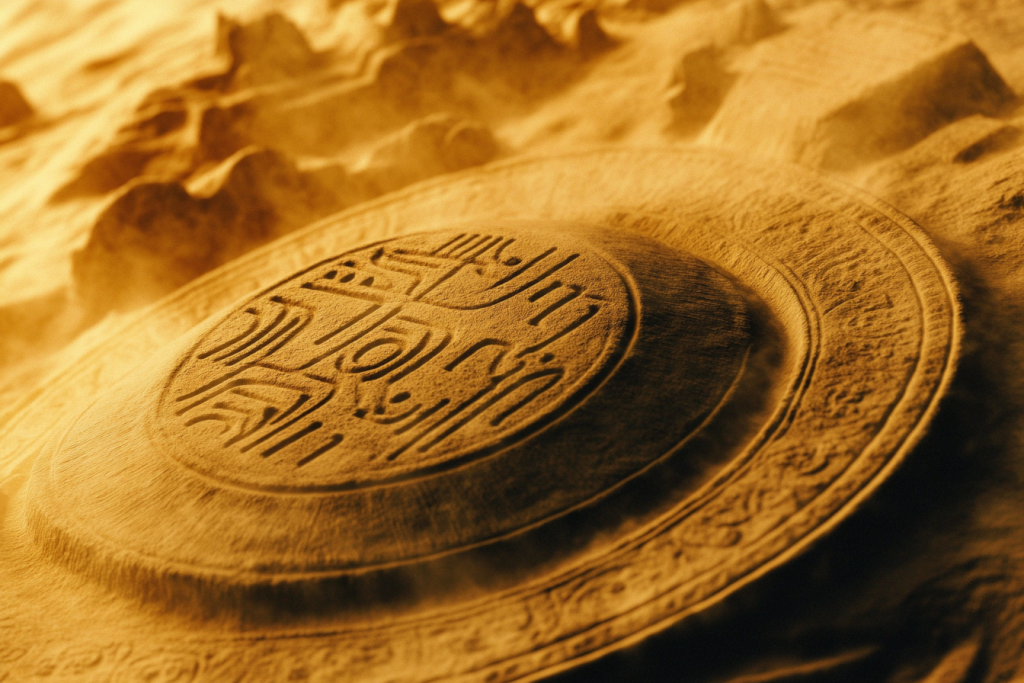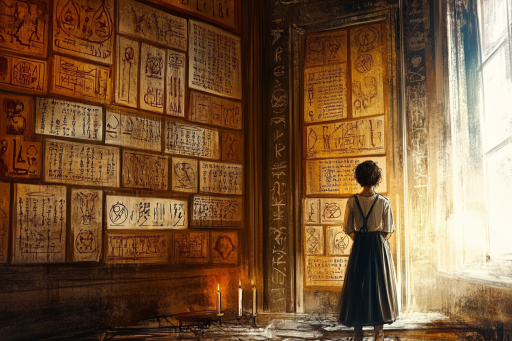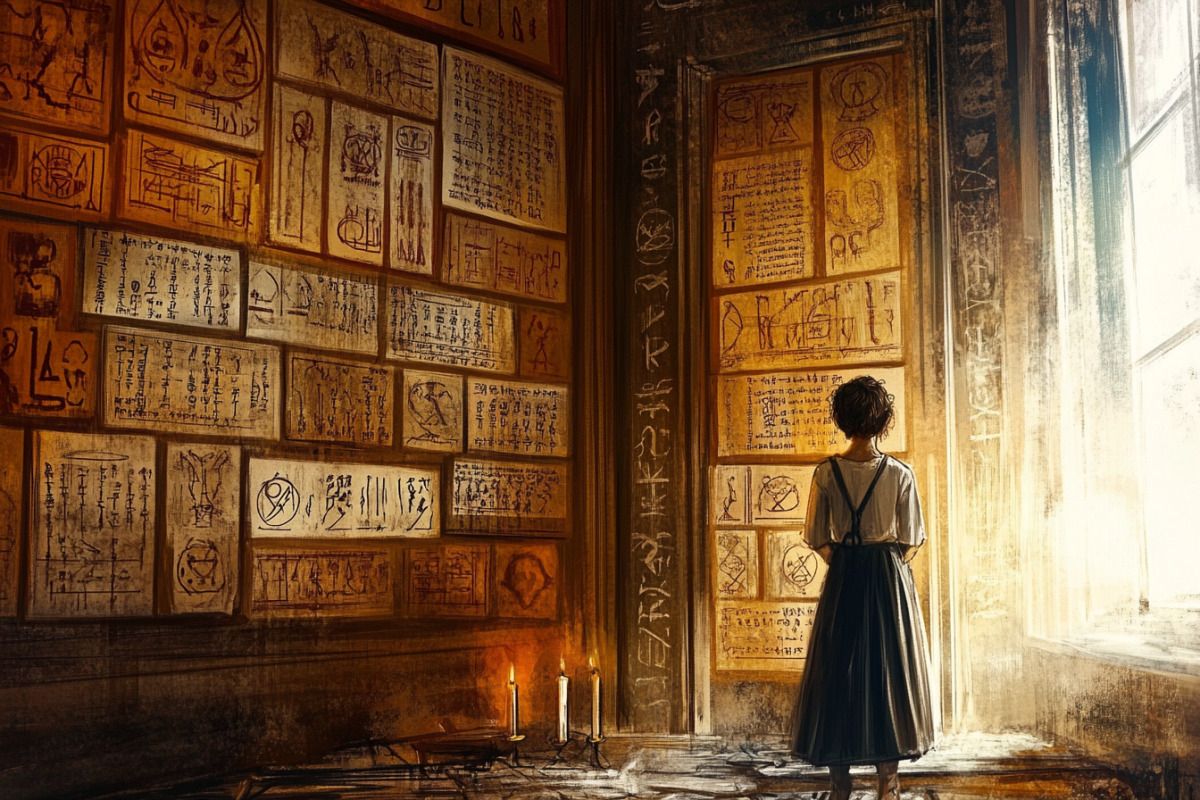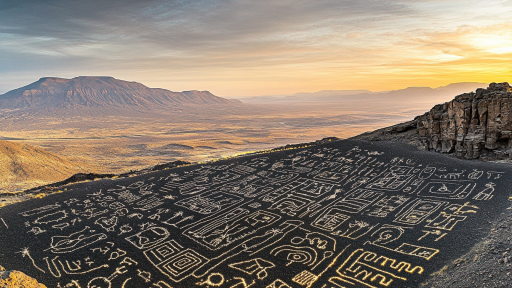
Across the ages, countless languages have risen and fallen, each carrying the weight of its people, stories, and knowledge. Some vanished when civilizations crumbled, while others faded into obscurity, leaving behind inscriptions and manuscripts that no one alive can decipher. These forgotten tongues whisper from ancient ruins, lost scrolls, and undeciphered symbols, hinting at histories we may never fully understand. What secrets do they still hold, waiting in silence for someone to unlock their meaning?
Rongorongo: The Script No One Can Read

Carved into wooden tablets on Easter Island, Rongorongo remains one of history’s greatest linguistic mysteries. Thought to be a form of writing used by the Rapa Nui people, its symbols defy interpretation, with no clear links to any known language. Some believe it contains records of lost knowledge, while others fear its meaning has been erased forever. Without a Rosetta Stone to bridge the gap, Rongorongo remains an enigma of the past.
The Voynich Manuscript: A Book of Impossible Words

Filled with bizarre illustrations and an uncrackable script, the Voynich Manuscript has baffled experts for centuries. Its pages depict strange plants, astronomical diagrams, and scenes of unknown rituals, but the text itself resists all attempts at translation. Some claim it’s a forgotten language, others a complex hoax—but if it’s a lost tongue, it could reveal secrets of an unknown civilization. For now, its words remain locked away, speaking only in mystery.
Linear A: The Minoan Code That Won’t Break

Before the Greeks ruled Crete, the Minoans carved their own history into clay tablets using a script known as Linear A. Unlike its successor, Linear B, which was later deciphered, Linear A refuses to give up its meaning. If decoded, it could rewrite our understanding of the Minoans—who they were, how they lived, and why they vanished. Until then, the silent symbols remain frozen in time, waiting for a key that may never come.
Etruscan: The Language of a Lost Civilization

Long before Rome dominated Italy, the Etruscans built a thriving culture—but their language has nearly disappeared. Despite thousands of inscriptions on tombs, jewelry, and ceramics, only fragments of Etruscan have been understood. Some words hint at rituals, gods, and a lost way of life, but the full picture remains just out of reach. Without more texts to compare, this ancient voice of Italy may never be heard again.
Indus Script: The Silent Legacy of an Ancient Empire

More than 4,000 years ago, the Indus Valley Civilization flourished, building vast cities with advanced plumbing and complex trade networks. Yet their script, etched onto seals and pottery, has never been deciphered. Unlike other ancient languages, no bilingual texts exist to aid translation, leaving its meaning a mystery. Was it a writing system, a form of record-keeping, or something else entirely? No one knows for sure.
Proto-Elamite: The Writing That Led to Nowhere

One of the world’s oldest known scripts, Proto-Elamite, appeared in what is now Iran over 5,000 years ago. Unlike its Mesopotamian neighbors, who left behind decipherable texts, Proto-Elamite vanished without a trace. Without linguistic relatives to compare it to, scholars struggle to piece together even the most basic meanings. It may hold answers about one of the earliest civilizations, but for now, it remains locked behind unreadable symbols.
Kushan Script: The Empire That Spoke in Shadows

The Kushan Empire once ruled over vast territories in Central Asia, yet the language of its rulers remains a puzzle. Though inscriptions have been found on coins and stone monuments, the script refuses to reveal its secrets. Scholars debate whether it was influenced by Greek, Indian, or Persian scripts, but no one has unlocked its full meaning. Until the code is cracked, the voices of this once-mighty empire remain unheard.
Byblos Syllabary: The Lost Words of the Phoenicians

Byblos, an ancient Phoenician city, was once a hub of trade and innovation, but its unique writing system remains undeciphered. Unlike the Phoenician alphabet, which influenced modern languages, the Byblos Syllabary stands alone. The few inscriptions found offer no clues to its pronunciation or meaning, making it one of the most frustrating linguistic mysteries. What messages were carved into these stones, now lost to time?
Wadi el-Hol Script: The Phantom Precursor to Writing

Discovered carved into rocks in the Egyptian desert, the Wadi el-Hol script appears to predate known alphabetic writing. Its symbols bear similarities to both Egyptian hieroglyphs and early Semitic scripts, but no one can read it. If deciphered, it could reveal the missing link between pictographs and the alphabets we use today. Until then, it remains a whisper from a time before written history began.
Ogham: The Secret Language of the Stones

Etched into ancient standing stones across Ireland and Britain, Ogham is a script shrouded in mystery. Some believe it was a coded language used by druids, while others think it was simply a primitive alphabet for marking land. Though scholars have reconstructed parts of it, much of its deeper meaning—if there was one—remains unknown. Were these lines and slashes just names, or something more?
Sitovo Inscriptions: The Unreadable Carvings of Bulgaria

Deep in the forests of Bulgaria, ancient carvings cover the walls of a rock shelter known as Sitovo. Scholars debate whether these marks are a forgotten script or just meaningless symbols. If it is a language, it could be one of the oldest in Europe, rewriting history as we know it. Until proof is found, the marks remain an unsolved puzzle.
Tărtăria Tablets: Europe’s Oldest Writing—or Just Symbols?

Unearthed in Romania, the Tărtăria Tablets bear what could be the oldest known writing in Europe—or simple decorative markings. Dating back to 5300 BCE, they predate even Mesopotamian scripts, but their meaning is unknown. If they are truly a form of writing, they could change our understanding of prehistoric communication. But without more examples, their message remains hidden.
Jiahu Symbols: The First Words of Ancient China?

Long before Chinese characters were developed, the people of Jiahu carved mysterious symbols onto tortoise shells. Some believe these are the ancestors of modern Chinese writing, while others argue they are just artistic marks. If they are true writing, they may push the origins of Chinese literacy back thousands of years. But without more evidence, their significance remains a mystery.
Libyco-Berber: The Vanished Voice of North Africa

Scattered across North Africa, ancient inscriptions in Libyco-Berber have resisted full translation for centuries. Though related to modern Berber languages, its full grammar and meaning remain elusive. Some believe it was used in rituals, while others think it marked territorial claims. With only fragments to study, the voice of this ancient people remains incomplete.
The Phaistos Disc: A Message Lost in Time

Discovered on the island of Crete, the Phaistos Disc is a clay tablet covered in a spiral of mysterious symbols. Unlike any other writing system, its pictographic characters seem to tell a story, but no one has been able to decipher them. Some believe it’s a religious text, others a coded message from an unknown civilization. Without similar artifacts to compare, the disc remains an unsolved puzzle, frozen in history.
Echoes of the Unheard

Languages are more than words; they are the vessels of history, culture, and lost knowledge. When a language disappears, so does an entire way of understanding the world, leaving behind only fragments of meaning. These forgotten scripts hint at civilizations that rose, thrived, and vanished—some known, others still waiting to be discovered. Perhaps the greatest mystery is not what we have lost, but what we have yet to find.





